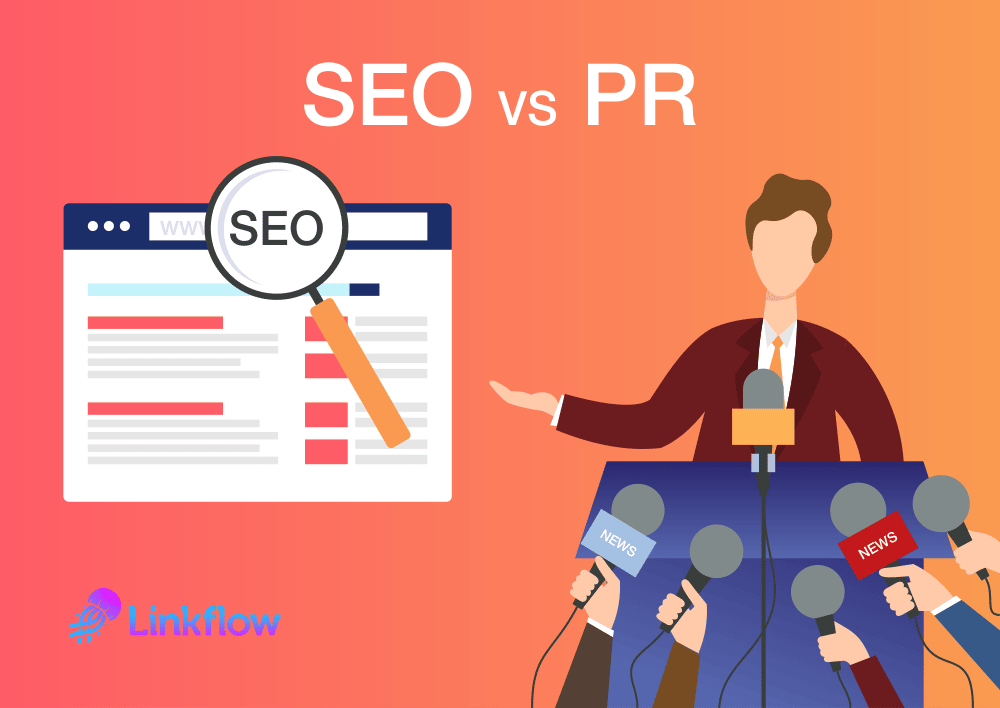
SEO is the practice of making changes to your site to increase its chances of ranking better in search engines for important keywords. Link building is a core facet of SEO, which involves obtaining backlinks from high quality publications to increase search engine visibility. The more high quality links you get, the more authoritative your content appears, which typically results in higher keyword rankings.
A question we often hear from our clients is, “How much traffic can we expect to get from links built to our site?”
While strategic link building can generate some actionable, high-intent referral traffic, this question typically indicates that the client might not understand the purpose of link building and is confusing it with public relations. This article will break down the key differences between these two marketing strategies and how using them can affect both your organic and referral traffic.
What is public relations?
Public relations (PR) strategies include programs and activities to sustain or enhance an organization’s image or its product and service offering. Done effectively, PR can be a key component of a marketing plan or promotional strategy. Traditional public relations activities include:
- Media relations campaigns that include press releases and targeted pitches to reporters and editors, in an effort to secure editorial news or feature coverage
- Special events, including fundraisers to support nonprofits and partnerships that demonstrate community outreach and social responsibility
- Speaking engagements at conferences, programs, or other events attended by an organization’s target audiences
What is digital PR?
Like most marketing campaigns, PR has shifted to the digital space, with examples including:
- Hiring an influencer to favorably review a product on social media
- Being interviewed or quoted on a highly trafficked blog site
- Presenting in a trade or topical webinar
Digital PR is to get positively noticed by consumers, creating referral traffic that converts to revenue. Referral traffic is generated when a user clicks on a link in a news article, tweet, LinkedIn post, or blog that directs them to your site.
The key difference between SEO and digital PR
With SEO, the goal is to get content noticed by search engines, which in turn promote your material to human users by ranking you higher on search engine results pages (SERPs). Building links to your site is one way to get noticed by Google as having authoritative content.
Let’s say, for example, that you have an eCommerce site that sells widgets. If your site is linked from a respected and reputable website in a news story about a surge in widget demand, Google will recognize and reward that with higher ranking when someone searches “widgets for sale.”
If a human user clicked on the same link, it would be characterized as referral traffic. Although referral traffic can be an added benefit of link building, it’s not the primary objective.
Final Thoughts
While the processes are similar, building links to improve your SEO is different from getting mentions in popular editorial publications. Links earned through PR campaigns are most often characterized as NoFollow links, which don’t help improve your Google ranking.
DoFollow links signal to Google and other search engines that a referring website would like to share its authority as a vote of confidence for your site! Linkflow only builds DoFollow links for our clients.
It’s important to understand the differences between SEO and PR before entering into a link building agreement to make sure your objectives and expectations are mutual.

Michelle Fayssoux, SEO Analyst
Michelle is a proud Orange County, California native with many years of experience helping clients improve their organic search performance. She has supported companies spanning a wide range of industries, including tech startups, e-commerce sites, and major SaaS brands. When she’s not writing about SEO or chatting with clients, she enjoys traveling, visiting local breweries, and staying active with her two dogs.
